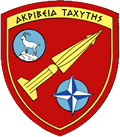Boeing B-29 Superfortress
The B-29 is a four-engine propeller-driven heavy bomber. Designed for the United States Military it had it's mayden flight at 21 September 1942 and took service on 8 May 1944. It served during World War II and the Korean War as one of the largest aircrafts at that time.
The name "Superfortress" was derived from that of its well-known predecessor, the B-17 Flying Fortress and can be seen as a ancestor to the b-47 Stratojet and the well known B-52 Stratofortress.
It's pressurized cabin, the electronic fire-control system, and remote-controlled machine-gun turrets made the B-29 a very advanced bomber for this time period.
The B-29 probably got it's well known and maybe dubious fame by being the primary aircraft in the American firebombing campaign against the Empire of Japan in the final months of World War II, carrying the atomic bombs that destroyed Hiroshima and Nagasaki. The B-29 took part at another milestone, as in 1947 it became the launcher for the Bell X-1, the first aircraft to exceed the speed of sound in controlled, level flight.
The B-29 retired on 21 June 1960.
Produced:




